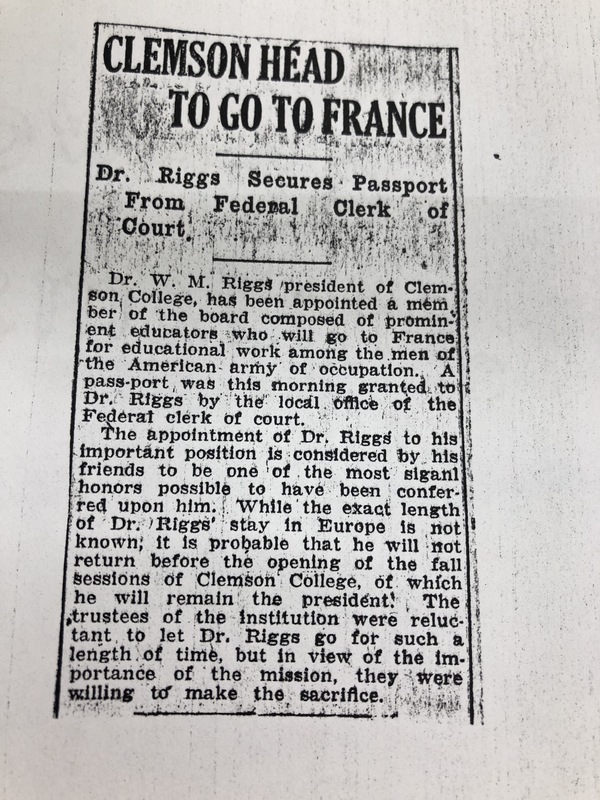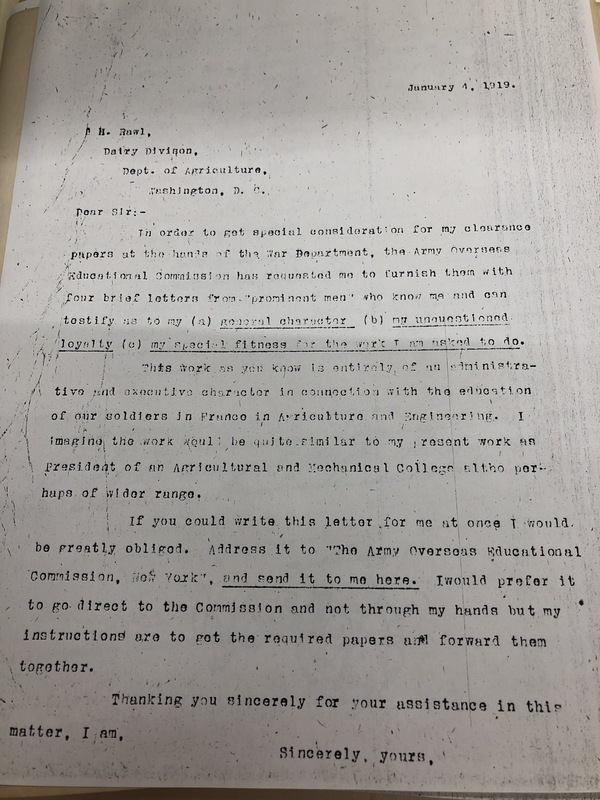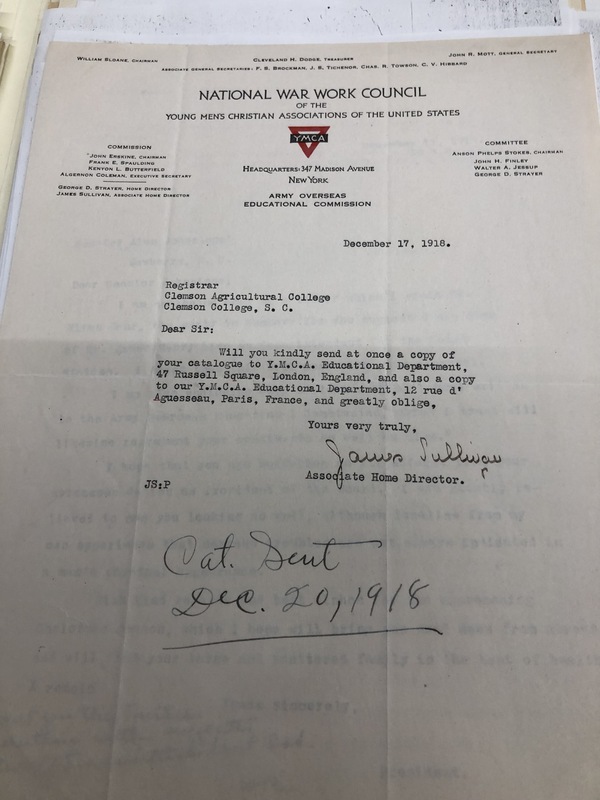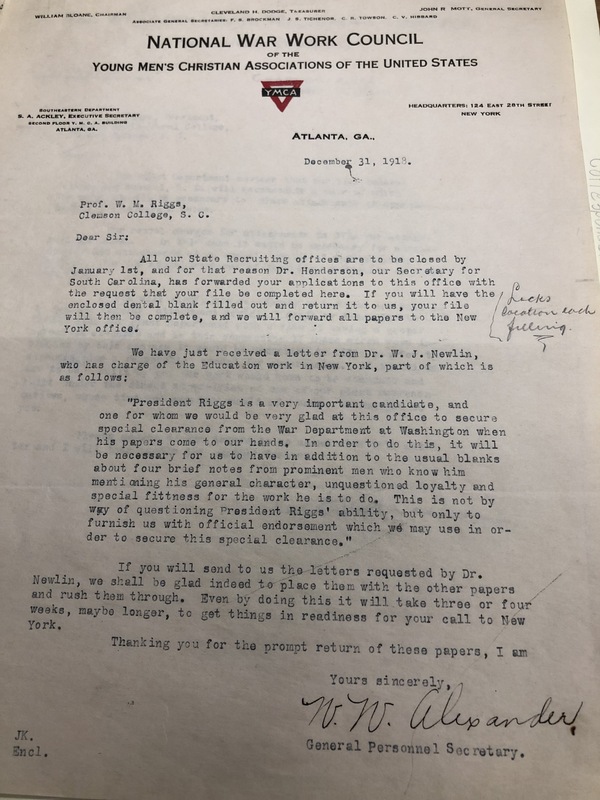Background
Walter Merritt Riggs was born in Orangeburg, South Carolina, on January 24th, 1873. He attended Auburn University (then Alabama Polytechnic Institute), where he received both his bachelor’s and master’s degrees in engineering (Grubb, 100). Riggs worked in the engineering department before becoming president on December 6th, 1909, after the resignation of P.H. Mell (Grubb, 101). Riggs himself was not a military man, yet he found himself as the president of a military college. Clemson was a land-grant college that offered both formal education and military education, a popular trend in the South in the nineteenth century (Andrew, 54). The idea was to give young men formal military training to “build character” and offer formal education in agriculture or engineering. Riggs was a supporter of land-grant colleges, both graduating from one (Auburn) and teaching at and being the president of another (Clemson).
Riggs’ presidency stands out because he was president during World War I. Clemson was still a fairly new military college, and World War I was the first true challenge the college faced. With the outbreak of the war in 1914, enrollment dropped drastically as young men volunteered or returned to their family farms to produce food for the war effort (Grubb, 118). In 1919, there were 662 students at the college, which was less than the number of students that were still in uniform (Reel, 213). The college was also reliant on a fertilizer tax that was less profitable because the price of cotton had gone down (Grubb, 117). In December of 1918, Riggs accepted a position with the American Overseas Educational Commission to go to France for six months and help with the post-war effort. After his return to campus, he had to deal with the walk-out of 1920, where 400 of 779 students left campus (Grubb, 120). Riggs’ presidency was filled with challenges that few other presidents had to face in an early and important time in Clemson’s history.
Riggs also served a role outside of the university. He was the catalyst for the war effort in upstate South Carolina. During the early years of the war, before U.S. involvement, Riggs’ was asked to encourage farmers to grow more food to prepare for the war. He also joined the State Council of Defense in 1918, and met regularly with prominent South Carolina figures to discuss the best ways to prepare for the war. Most of the members of the State Council of Defense were from the South Carolina Midlands or Low Country, Riggs was one of the few men who represented the Upstate. He regularly communicated with Benjamin Tillman, who was a U.S. senator and was on the Senate Committee on Naval Affairs. Tillman was the one who pushed Riggs to take a leadership role in South Carolina’s war effort and to keep him informed in both South Carolina and Clemson affairs. Walter Riggs led Clemson College through one of its most trying times, became a leader of South Carolina during the war, and took on a role at the national level by the wars end. He was the catalyst for the war effort in Clemson and the South Carolina Upstate in general because of his role as president of Clemson and his good standing with government officials such as Tillman.




